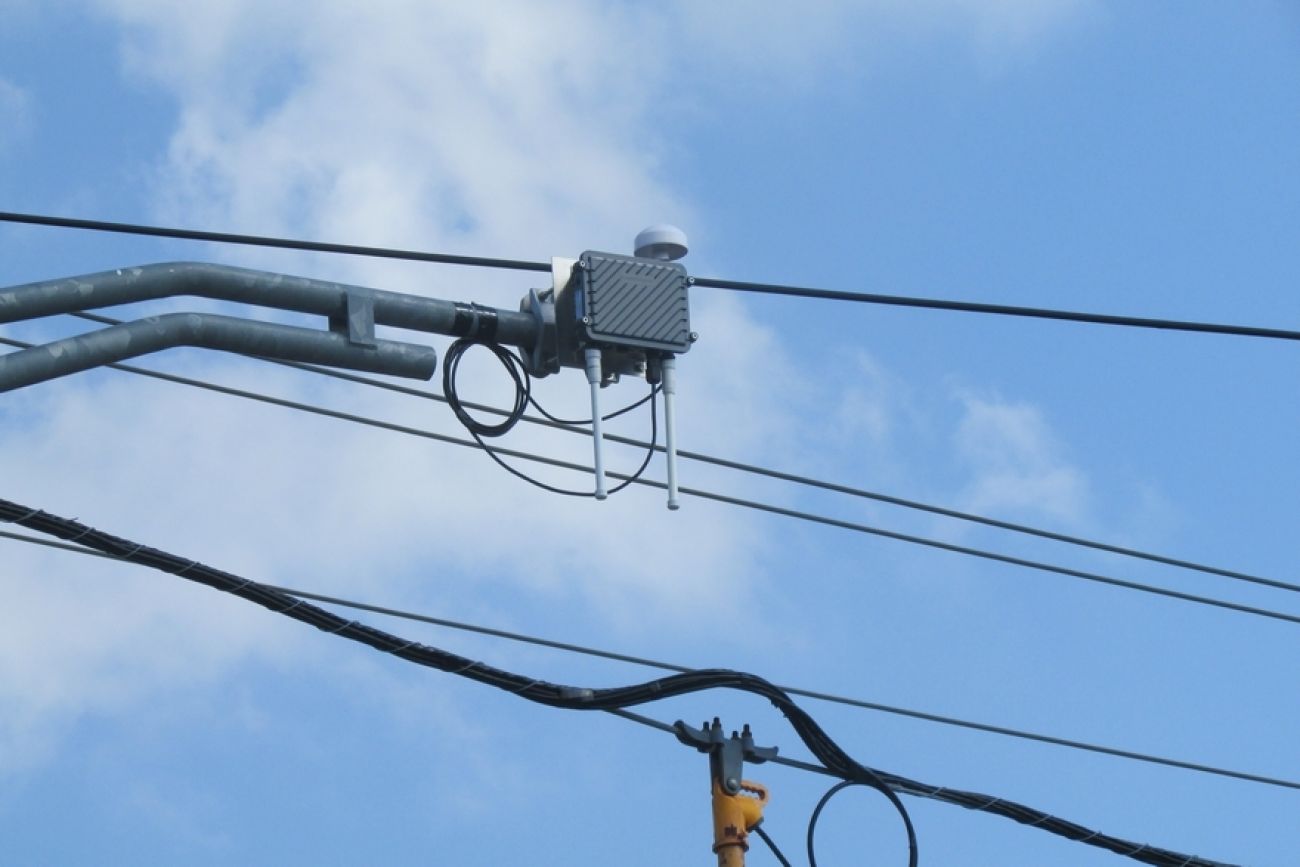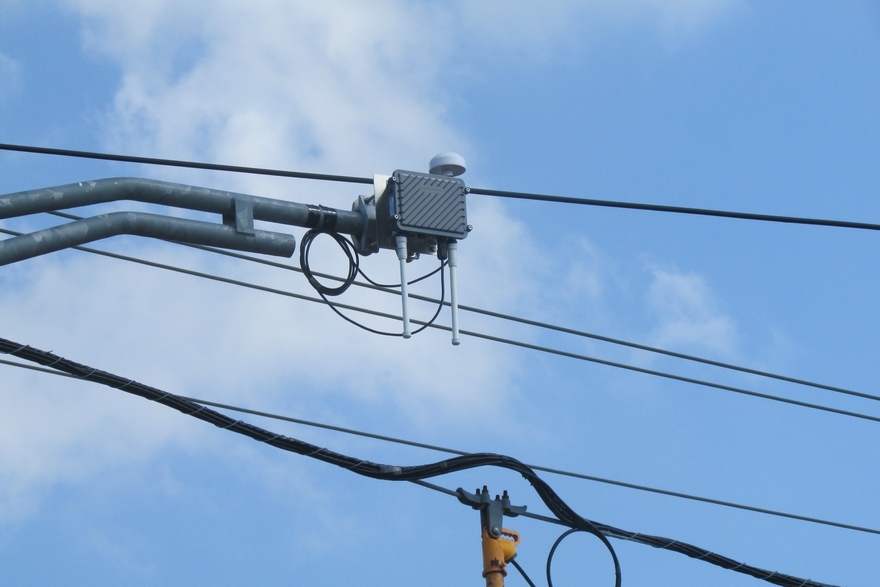‘Smart road’ speed, location sensors going on up Michigan roads

LANSING — The smart roads of the not-too-distant future are being built in Southeast Michigan.
Along a 125-mile triangle from St. Clair Shores to Brighton and Ann Arbor and back, more than 100 sensors capable of detecting a vehicle’s speed and location are installed along the side of the road — many of them in Oakland County.
State and federal transportation managers want to see how these sensors interact with the connected and driverless vehicle prototypes automakers are developing, especially when it comes to alerting cars to oncoming hazards — red traffic lights, icy roads, work zones or lane closures.
As Michigan aspires to lead the nation in mobility research and development of automated cars, these so-called vehicle-to-infrastructure projects will be crucial not only to understanding how the technology works to improve vehicle safety, but also, many hope, to attracting the economic benefits that come with being an R&D hub.
The Michigan Department of Transportation applied for a share of a $60 million federal grant last week to buy more of these devices, in conjunction with the University of Michigan in Ann Arbor, where the federal government launched a connected vehicle pilot program several years ago. The goal is to keep Michigan on the cutting edge of all things mobility, given competition from other states.
But the technology also adds a new layer of complexity to the ongoing question about how the state funds its infrastructure: How to pay for the systems we’ll need in the future, not just the ones we have today. The answer isn’t yet clear.
The market for connected vehicle technology is emerging amid the broader context that Michigan for years has under-invested in its infrastructure, one of the reasons the state ranked last among the 50 states in a 2009 study by the American Society of Civil Engineers. The state is hardly alone; the ASCE estimated in a recent report that slightly more than half of the nation’s infrastructure needs are funded.
Many of the sensors set up around metro Detroit were bought with federal dollars. Michigan’s transportation department says it has spent close to $3 million through multiple funding sources, mostly federal money with matching state contributions.
But federal grants have limits. So do state and local transportation budgets. In response, state transportation administrators and Oakland County government leaders, including the county road agency, have been working to develop a business model that could support more “smart” infrastructure projects — including tapping the private sector for money.
“We’re pretty confident that there are business models out there to help offset or drastically reduce the amount of public transportation resources needed to put ... these systems into place,” said Matt Smith, MDOT’s intelligent transportation systems program administrator. “We don’t have any public-private partnership agreements in place right now, but it is being jointly — very aggressively — pursued.”
At a cost of roughly $5,000 to $6,000 per sensor, the state is targeting specific locations rather than deploying them for deployment’s sake, Smith said. If administrators can get the same data and anticipated safety benefits without having to pay the cost of installation, he added, “we’re completely on board.”
Setting up sensors
In a June 2014 report, the American Association of State Highway and Transportation Officials envisioned that by 2040, when the market for connected vehicles has matured, 80 percent of the nation’s traffic signals will be equipped with sensors; 25,000 more would be set up at other roadside locations.
Besides the wireless devices themselves, other infrastructure systems necessary to support connected vehicles likely will include cybersecurity protections; mapping and geopositioning services that can identify a vehicle’s location; and a data center equipped with servers to collect data transmitted from vehicles and to send signals, the group’s report suggests.
Potential applications are numerous. Not only could this technology support the mobility industry, the authors wrote, but it also could contribute to driver safety improvements, help public agencies monitor road conditions, enable international border crossings and collect fees.
Even so: “For the purposes of this analysis, it is assumed that there will be no congressionally designated funding to support the deployment of connected vehicle field infrastructure,” the report said. “As such, it is unlikely there will be a centrally coordinated nationwide infrastructure rollout.”
More likely, the authors suggest, are partnerships between government and the private sector, such as data service providers and developers of commercial applications — both for the installation and for upkeep.
In the early 2000s, as automakers and government leaders began to study whether connected vehicle technology was possible, national groups were estimating the U.S. would need 250,000 sensors placed across the country, Smith said.
“Boil that down, and that’s thousands upon thousands in each state,” he said.
Today, the range of a radio unit has improved to about 1,000 feet, but Smith said signals could be transmitted beyond that distance if they bounce off of multiple vehicles’ receivers as part of a larger network, he said. That allows the state road department to target locations along roadsides at least every half mile, if not farther, which also lowers the cost.
The U.S. Department of Transportation in 2012 launched a $25 million pilot deployment program in Ann Arbor along with UM’s Transportation Research Institute, with the university receiving about $13 million. The pilot program sent 2,800 cars, trucks and buses onto Ann Arbor streets, equipped with two-way technology that allowed the vehicles to send and receive signals. The technology was used to test how drivers could be warned if they are at risk of a crash or faced other traffic hazards.
About 155 roadside units should be in place across metro Detroit by the end of this year, MDOT Director Kirk Steudle said during the recent Detroit Regional Chamber Mackinac Policy Conference.
Next in line for sensors are I-275 from Five Mile Road in Livonia to the I-96/I-696/M-5 interchange in Novi, and I-75 near Auburn Hills as they’re reconstructed, the state said. The I-275 project is underway now, with the I-75 project staggered in Oakland County through 2030.
Fiber optic lines are being laid along I-275 while the pavement is being rebuilt, Smith said. If approved for a federal grant, MDOT would retrofit some older state-owned vehicles with the technology, Smith said. UM’s Mobility Transformation Center and a group of automakers also jointly applied for the grant.
State road administrators also are developing a single back-end system that can process all the data collected from connected vehicles.
Arada Systems, a subsidiary of Southfield-based Lear Corp., is the state’s current supplier of the connected vehicle technology. Arada Systems was founded in Silicon Valley as a spinoff of Qualcomm Atheros Inc., owned by San Diego-based wireless technology developer Qualcomm Inc. Arada recently moved its headquarters to Troy.
The effort goes beyond passenger vehicles. The U.S. Army, through its Tank Automotive Research, Development and Engineering Center, last week tested how military vehicles can communicate with roadside devices the state transportation department installed along I-69 in St. Clair and Lapeer counties.
Feds taking the lead
For the time being, the federal government is taking the lead on many of the early developments. Congress included a provision in the newest federal highway bill that incentivizes states that install vehicle-to-infrastructure technology by allowing them to use some federal funding from existing highway programs. The FAST Act (Fixing America’s Surface Transportation Act) authorizes $305 billion for five years, through the 2020 fiscal year, according to Sen. Gary Peters’ office.
Automakers say they are on board. General Motors Co. President Dan Ammann told reporters at the Mackinac conference that the Detroit carmaker supports real-world, on-road testing that goes beyond the controlled environments like UM’s Mcity site and the planned American Center for Mobility at Willow Run.
Oakland County has been involved in discussions about long-term funding sources as one of the state’s earliest adopters of the technology, said Danielle Deneau, director of traffic safety for the Road Commission for Oakland County.
Test beds have been created in Novi and Farmington Hills, she said, and 22 traffic signals along Telegraph Road between Nine Mile and 13 Mile roads can tell vehicles equipped with receivers when the signal will change.
The road commission is interested in what future infrastructure systems will look like because of the benefits they could have on project planning, Deneau said.
Oakland County’s program has cost close to $100 million since its inception, though much of that is for a separate program that started in the ‘90s to help traffic signals ease congestion by keeping lights green if they sense heavy traffic, she said.
“We have 900 square miles across Oakland County. If you want to put radios across them, it’s going to cost some money,” Deneau said.
Cities, too, are looking for guidance on how to tackle the infrastructure question, said Richard Murphy, the Michigan Municipal League’s Civic Innovation Labs program coordinator, who helps cities adapt to changing trends through planning and public engagement.
The emerging industry sector also raises questions that impact community planning.
For instance, he said: Should cities start laying conduit and fiber optic cables when they rebuild local streets today to prepare for smart infrastructure needs a decade from now? Do municipal leaders invest in more parking to alleviate congestion today if the mobility industry will lead to less car ownership and more ride sharing?
“The consensus was, yes, more answers are needed on this, and things are still pretty wide open,” Murphy said. “It is definitely something that we are looking at and thinking about.”
See what new members are saying about why they donated to Bridge Michigan:
- “In order for this information to be accurate and unbiased it must be underwritten by its readers, not by special interests.” - Larry S.
- “Not many other media sources report on the topics Bridge does.” - Susan B.
- “Your journalism is outstanding and rare these days.” - Mark S.
If you want to ensure the future of nonpartisan, nonprofit Michigan journalism, please become a member today. You, too, will be asked why you donated and maybe we'll feature your quote next time!


 Sensors like these, intended to communicate with autonomous vehicles, are starting to pop up on roads in Southeast Michigan. (Photo by MDOT)
Sensors like these, intended to communicate with autonomous vehicles, are starting to pop up on roads in Southeast Michigan. (Photo by MDOT)